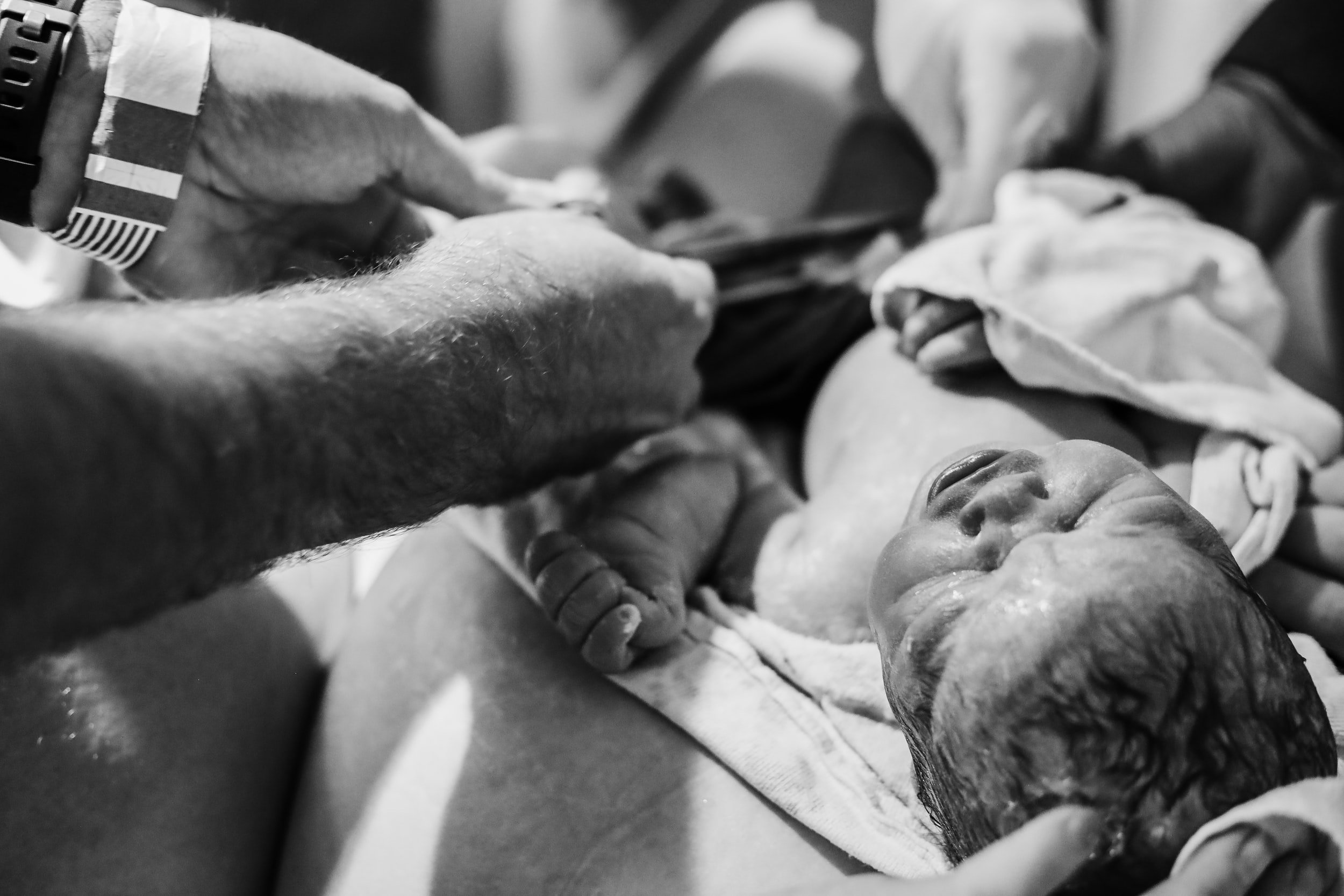Mother-nature has long celebrated what research is now confirming in regards to child birth. The most optimal entry into this world occurs through the vaginal canal. This delivery method appears to have far reaching positive effects on overall health. Although there remains much to learn regarding the complex process of labor and delivery, the amazingly robust and perfectly designed bacterial sauce poured onto babies’ skin as they travel through the birth canal is undeniably second to none.
With the advent of Cesarean deliveries, the gift of this especially crafted bacterial milieu is not bestowed upon the neonate. C-sections have occurred since ancient times. In fact, speculations exist that the word Caesarean stems from Julius Caesar’s very entrance into the world. There also endures stories of removing offspring from mothers’ abdomens within Greek mythology. In more current times, C-section deliveries remain a most valuable delivery method when clinically warranted. However with the sharp rise in C-section procedures, closely correlated increases in childhood health calamities including asthma, atopic diseases, ear infections, bowel dysfunction, systemic immune-up regulation and obesity continue to occur at disturbing rates.
In trying to determine the underlying cause of increased health dysfunction, we must explore the basics of the microflora. Vaginally-born infants demonstrate a microbiome dominated by species common to the birth canal including Bifidobacterium, Bacteroides and other beneficial species. C-section infants’ foster bacterial populations akin to the skin surface, including Staphylococcus, Prevotella and other species while being largely devoid of Bifido species. We’re beginning to understand that bacterial community discrepancies at the very start of life convey substantially different communications to new human systems. The intimate crosstalk between a person’s microbiota and immune system appears to be greatly impacted by delivery method.
In mouse studies, lower functionality is seen within the immune system of C-section born mice. Specific immune modulators including cytokines, dendritic cells, regulatory T cells and genetic expression within lymph tissues are negatively impacted.
Practitioners and parents alike are beginning to consider and employ purposeful inoculation of beneficial bacteria to counterbalance this potential disruption. Exposure may include one of two therapeutic strategies implemented immediately upon birth. The first method consists of gauze soaked within the mother’s vagina during the surgical procedure. The bacteria-saturated gauze is then swabbed inside the baby’s mouth, face and entire body. This strategy is likely most beneficial as the exact microbial fingerprint of Mom’s flora is gifted to her baby. Precautionary measures to ensure the mother is in agreeable health and that no contraindications including vaginal or systemic infections are present remains top priority.
The second inoculation method involves a specially designed probiotic formula applied in the same manner. Additional supportive inoculation therapy can be applied as is clinically warranted based on the needs of the infant. If there exists family history of autoimmunity or gastrointestinal disease, if Mom has difficulties nursing, or if the infant demonstrates early immuno-dysregulation symptomology, successional bacterial exposures are warranted.
Further investigation into how differing bacterial baselines via delivery mode serve to prevent or encourage health dysfunction should be completed. With current C-section rates at over 30%, or approximately 1 in 3 deliveries, the need to revisit delivery method decisions as well as having a go-to therapeutic strategy are of great importance moving forward. Let us continue to embrace neonatal journeys through the vaginal canal. When this is not an option, let us stand in for mother-nature and purposefully modulate microbiomes for the betterment of future generations. Vaginal or probiotics swabbing of Cesarean- born neonates offers a safe, cost-effective and easily accessible therapy most worthy of consideration as a new standard of care.
References
· Negele, Heinrich, Borte, Berg, Schaaf, Lehmann, Wichmann, Bolte. “Mode of Delivery and Development of Atopic Disease during the First Two Years of Life.” Pediatric Allergy Immunology. Feb 2004. http://www.nlm.nih.gov/exhibition/cesarean/part1.html
· Sevelsted, Stokholm, Bønnelykke, and Bisgaard. “Cesarean Section and Chronic Immune Disorders.” Pediatrics, October 2014.
· Nimwegen, F. Penders, J. Stobberingh, E. Postma, D. Koppelman, G. “Mode and Place of Delivery, Gastrointestinal Microbiota, and Their Influence on Asthma and Atopy.” Journal of Allergy and Clinical Microbiology. August 29, 2011.
· Biasucci, Benanti, Morelli, Bessi and Boehm. “Cesarean Delivery May Affect the Early Biodiversity of Intestinal Bacteria.” Journal of Nutrition, 2008.
· Dominguez-Bello, Costello, Contreras, Magris, Hidalgo, Fierer, Knight. “Delivery Mode Shapes the Acquisition and Structure of the Initial Microbiota Across Multiple Body Habitats in Newborns.” PNAS, March 2010.
· McLean, Dieguez, Miller, Young. “Does the Microbiota Play a Role in the Pathogenesis of Autoimmune Diseases?” Gut 2015; 64:332-341.
· Hansen, Andersen, Krych, Metzdorff, Hasselby, Skov, Nielsen, Buschard, Hansen, Hansen. “Mode of Delivery Shapes Gut Colonization Pattern and Modulates Regulatory Immunity in Mice.” Journal of Immunology. August 2014.
· Cacho, Neu. “Manipulation of the intestinal Microbiome in Newborn Infants.” Advances in Nutrition, January 2014.





